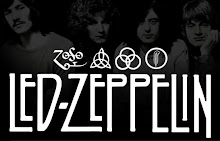POETRY STYLES
- Acrostic Style - Ballad Style- Clerihew Style- Epitaph Style- Haiku - Monody- Monorhyme- Palindrome-
Pantoum- Villanelle
Acrostic:
C ontagious,
A biding charm,
R iding around,
O blivious of all,
U nder the carousel
S miling broad
E xcitement
L asting forever.
Ballad:
A short narrative poem with stanzas of two or four lines and usually a refrain. The story of a ballad can originate from a wide range of subject matter but most frequently deals with folk-lore or popular legends. They are written in straight-forward verse, seldom with detail, but always with graphic simplicity and force. Most ballads are suitable for singing and, while sometimes varied in practice, are generally written in ballad meter, last words of the second and fourth lines rhyming.
Example:
As Jesse looked aroundshe was goin' the other way
.Jesse made the wrong movenow there's nothin' he can say.
Sarah was real excitedto see her boyfriend Jess.
But he was more interestedin all of his success.
You see old Jess was sheriff and he wore that badge so proud.
He was always boastfulwhen ever he got by a crowd
.As Jesse looked aroundshe was goin' the other way.
Jesse made the wrong movenow there's nothin' he can say.
Clerihew:A Clerihew is a comic verse consisting of two couplets and a specific rhyming scheme, usually aabb. The poem is about/deals with a person/character within the first rhyme
Example:
Zachary is my grandson
with whom I have much fun.
He loves to laugh and smile
his face stretches for a mile.
Epitaph Style:An epitaph is a brief poem inscribed on a tombstone praising a deceased person, usually with rhyming lines.
Example:
Here lies the man named Buck
he just ran plum out of luck.
He's buried here in the ground
Now ya know where he be found
Haiku:Haiku (also called nature or seasonal haiku) is an unrhymed Japanese verse consisting of three unrhymed lines of five, seven, and five syllables (5, 7, 5) or 17 syllables in all. Haiku is usually written in the present tense and focuses on nature (seasons).
Example:
wrath of the monsoonlightning
displays with heavy winds
here fast, gone faster
Monody:A monody is a poem in which one person laments another's death.
Example:
Deep within your broken heart,
she will always be that part.
Isabella Rose has gone away,
to join our Lord on this here day.
The angels in heaven welcomed her,
as life on earth goes by in a blur.
Now when you say a little prayer,
Isabella Rose will be listening there.
So amidst the stars up in the sky,
the brightest one will catch your eye.
And you will know that she is there,
even if no one around is aware.
So may God bless you and yours,
as you go about your daily chores.
And one day soon you will met again,
and be united forever, Thank God Amen.
Villanelle:A Villanelle is a nineteen-line poem consisting of a very specific rhyming scheme: aba aba aba aba aba abaa. The first and the third lines in the first stanza are repeated in alternating order throughout the poem, and appear together in the last two lines.
Example:
Way up high on the plateau.
Man and animals live free,
where the ponderosa's grow.
After the snow, all seems aglow,
on the rim with some degree.
Way up high on the plateau.
Eagles soar up with the crow,
and deer run wild and free.
Where the ponderosa's grow.
Bears grow fat and seem to slow,
as winter begins and now they flee .
Way up high on the plateau.
Rains fall and rivers flow,
as rainbow's paint a grand marquee.
Where the ponderosa's grow.
The ermine coating of the snow,
is the prettiest sight to see.
Way up high on the plateau ,
where the ponderosa's grow.
A Monorhyme is a poem in which all the lines have the same end rhyme
Monorhyme:
I was sitting in my chairwanting to become a millionaire
It won't happen I'm well awarebut I still think its very unfair
I have even said a little prayerbut I don't have that special flair
And my bodies in great despairI think
I look more like a pearBut at least
I still have my hairand a table to play solitaire
Pantoum:The pantoum consists of a series of quatrains rhyming ABAB in which the second and fourth lines of a quatrain recur as the first and third lines in the succeeding quatrain; each quatrain introduces a new second rhyme as BCBC, CDCD.
The first line of the series recurs as the last line of the closing quatrain, and third line of the poem recurs as the second line of the closing quatrain, rhyming ZAZA.
The design is simple:
Line 1Line 2Line 3Line 4 Line 5 (repeat of line 2)Line 6Line 7 (repeat of line 4)Line 8
Continue with as many stanzas as you wish, but the ending stanza then repeats the second and fourth lines of the previous stanza (as its first and third lines), and also repeats the third line of the first stanza, as its second line, and the first line of the first stanza as its fourth. So the first line of the poem is also the last.
Last stanza:
Line 2 of previous stanzaLine 3 of first stanzaLine 4 of previous stanzaLine 1 of first stanza
Example:
Awe struck with this splendor
the sun sets on the Ocean
This makes my heart surrender
it causes me deep emotion
The sun sets on the Ocean.
as it shimmers on the waves
It causes me deep emotion
as it covers a thousand graves
As it shimmers on the waves
it glows like a golden pearl
As it covers a thousand graves
amidst the waves that swirl
It glows like a golden pearl
this makes my heart surrender
Amidst the waves that swirla
we struck with this splendor.
Subscribe to:
Post Comments (Atom)

No comments:
Post a Comment